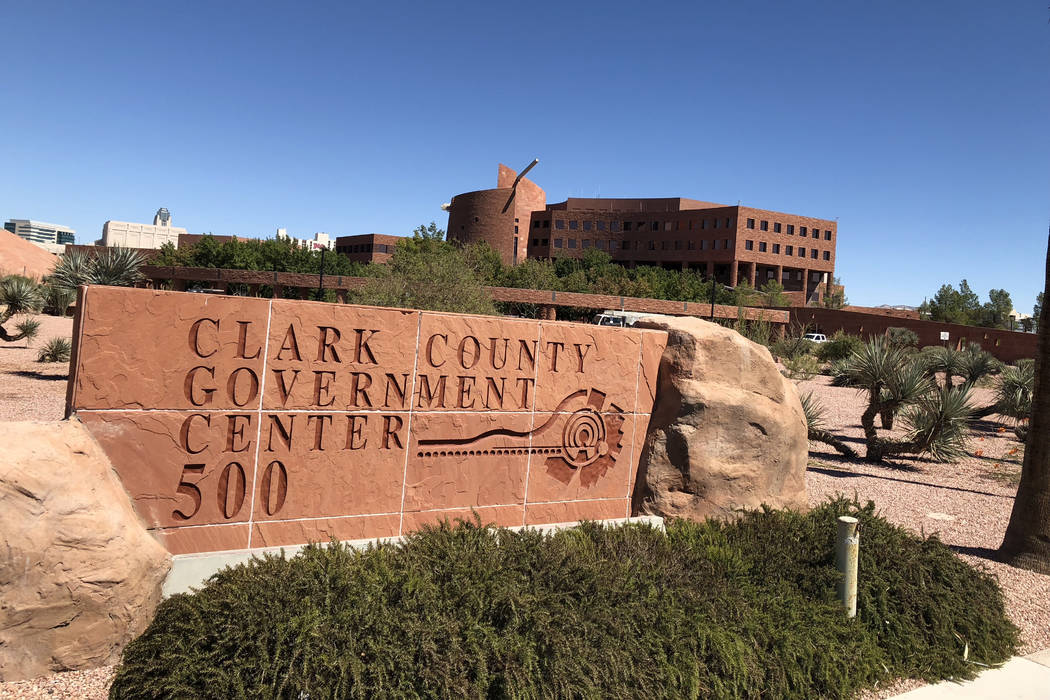Clark County backs public land site for senior affordable housing
Clark County officials have entered talks with a developer to turn a 5-acre plot of federal land in the southeastern valley into a $33 million affordable housing project for seniors.
Under the proposed development agreement, Coordinated Living of Southern Nevada would develop 195 apartment units northwest of the intersection of Pebble Road and Eastern Avenue.
Rents for one-bedroom units would range from $392 to $784, while two-bedroom units would be available from $471 to $942, according to the proposal. Availability would depend on household income, restricted to no more than 60 percent of the area median income.
Pushed forward by the county Commission on Tuesday, the plan is a product of the 1998 Southern Nevada Public Lands Management Act, which allows state or local agencies to buy federal land at significant discounts — up to 95 percent — for the purpose of developing affordable housing.
In the two decades since its inception, the county has used the program twice and worked with the state on a third project, but 12 years have passed since the last development, according to Kristin Cooper, the county’s community resources manager.
The latest project, if it comes to fruition, would have several layers of financing including private activity bonds and low-income housing tax credits, the proposal shows.
County officials pointed to the proposal as just one in a series of recent moves to address a countywide affordable housing crisis. Other efforts, they say, have included establishing incentives and funding for new projects and designating additional federal parcels for development.
There is currently a shortage of nearly 60,000 affordable homes countywide for “extremely low-income” households, which are defined as having an annual income at or below 30 percent of the area median income. The shortage grows to more than 78,000 homes when you include “very low-income” households, or those that make 50 percent or less of median.
The timetable for the project is murky but construction could get underway by 2021, according to the county. After a development agreement is reached, the project must wind through other steps both internally and through the Bureau of Land Management.
“I think this is a perfect location,” said Commissioner Michael Naft, who represents District A where the project is proposed. “And Lord knows we’ll need it in 2½ years even more so.”
Officials heart art
County commissioners on Tuesday also directed their staff to pursue a contract with the Nevada Museum of Art, Las Vegas, which is considering the county’s government center campus in downtown Las Vegas as the site for its roughly $250 million fine arts museum.
Officials were complimentary of the project, but museum planners will need to address county employee parking alternatives under any deal. The proposed site on the southern tip of the campus is currently an expansive parking lot.
The museum, part of a statewide expansion of the Reno-based Nevada Museum of Art, was initially planned to be built at Symphony Park. However, organizers later determined they would need more space to create a world-class art museum than the 1.2-acre site donated by the city of Las Vegas.
Commissioner Lawrence Weekly, whose district encompasses the county campus where the museum could be constructed, said that the site “makes a whole lot of sense.”
More plans for tax money
Also on Tuesday, county officials supported a performance-based plan to use $9 million of projected new tax revenue for workforce training.
Under a proposal that would need to return to the commission for approval, the county would authorize funding to bankroll tuition for up to 1,000 students to attend Culinary Academy of Las Vegas training programs and to pay for academy capital improvement projects.
The county would also fund improvements to existing vocational services and provide incentives for new providers.
Plans would be funded through a one-eighth percent sales tax afforded under Assembly Bill 309. The tax, effective Jan. 1., is expected to generate $54 million yearly that may only be spent on initiatives outlined by Legislature.
County officials previously backed a $12 million plan to fight chronic absenteeism and truancy in schools with money from the tax.
Contact Shea Johnson at sjohnson@reviewjournal.com or 702-383-0272. Follow @Shea_LVRJ on Twitter.























